
Plant Cells. Overview of Plant Structure online presentation
stem leaves Watch: The structure of plants Learn about the roots, stem, leaves and petals. Video Transcript Plants sometimes also have: trunks branches flowers or blossom fruits such as.
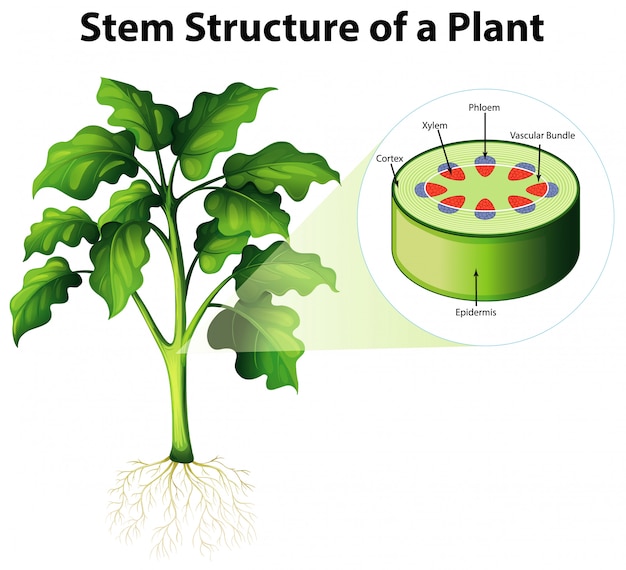
Premium Vector Diagram showing stem structure of a plant
The epidermis is a single layer of cells covering a plant's leaves, flowers, roots, and stems, forming a boundary to the external environment. Just within the stem's epidermis, there is a layer of spongy cells that make up the cortex. The majority of the cortex is made up of parenchyma tissue, one of the three simple tissues found in plants.
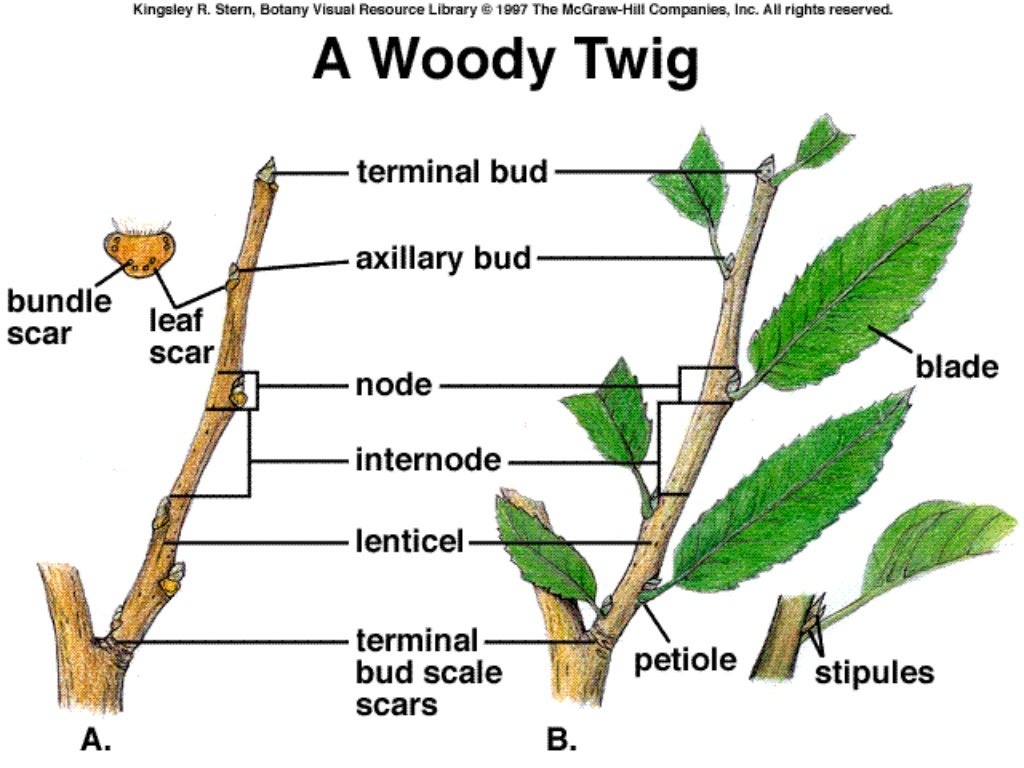
Stems 100926175806phpapp02
Broadly, plants have two organ systems: A) the root system and B) the shoot system. A typical diagram of a plant body consists of three parts: 1) roots, 2) stems, and 3) leaves, each having specialized functions.Apart from these basic parts, a flowering plant also contains 4) flowers and 5) fruits.. The root system covers the underground parts of a plant, which include the roots, tubers, and.

Parts of a plant Rabbitsabc
Identify basic common structures of plants. While individual plant species are unique, all share a common structure: a plant body consisting of stems, roots, and leaves. They all transport water, minerals, and sugars produced through photosynthesis through the plant body in a similar manner. All plant species also respond to environmental.
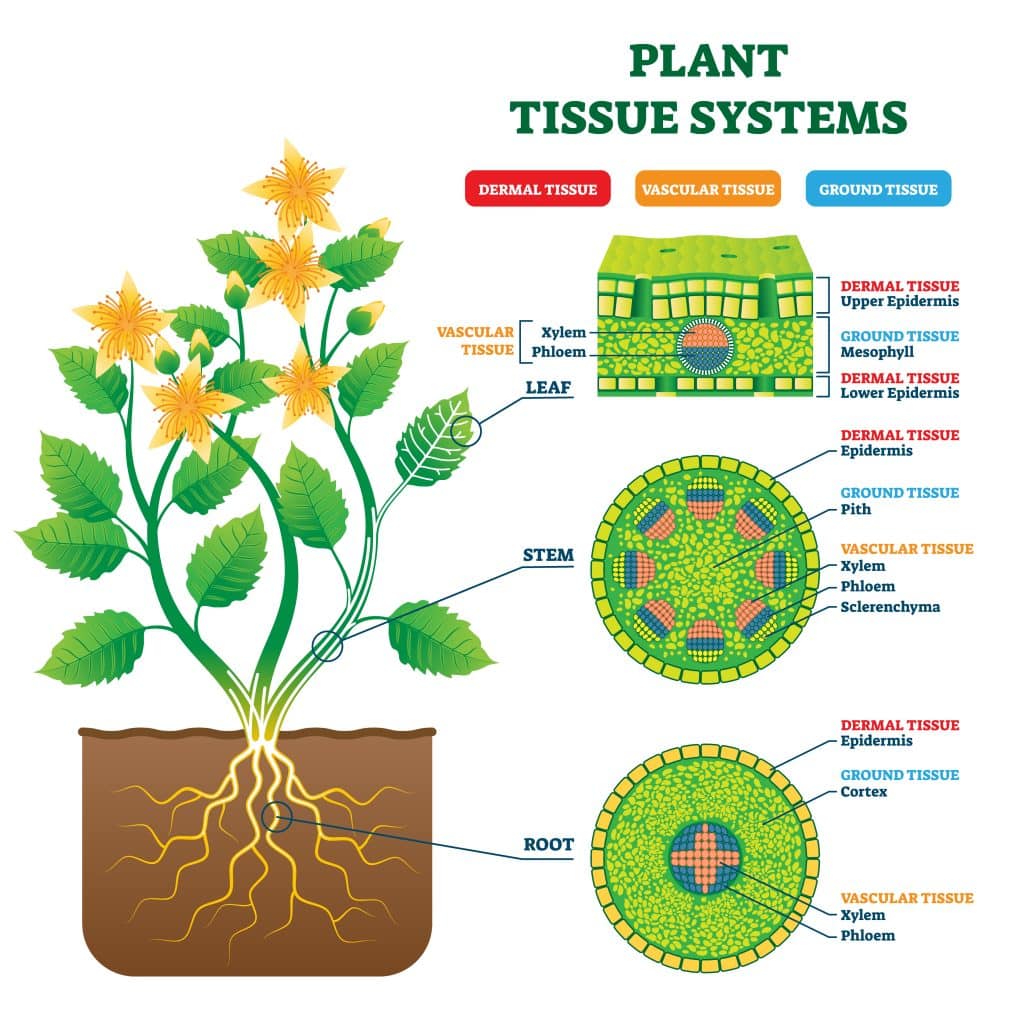
Section 5 Roots, Stems, and Leaves Nitty Gritty Science
The first cork cambium produced by a stem arises from the cortex, but subsequent cork cambia are produced by the parenchyma cells of the secondary phloem. (In contrast, the cork cambium arises from the pericycle in roots.) Figure 3.3.3.4 3.3.3. 4: Cross section of a basswood ( Tilia) stem magnified at 400X.

What are the parts of a stem? lovethatleaf
Stems are characterized by the presence of nodes (the points of attachment for leaves or branches) and internodes (regions between nodes). Plant organs are made up of simple and complex tissues. The stem has three tissue systems: dermal, vascular, and ground tissue. Dermal tissue is the outer covering of the plant.
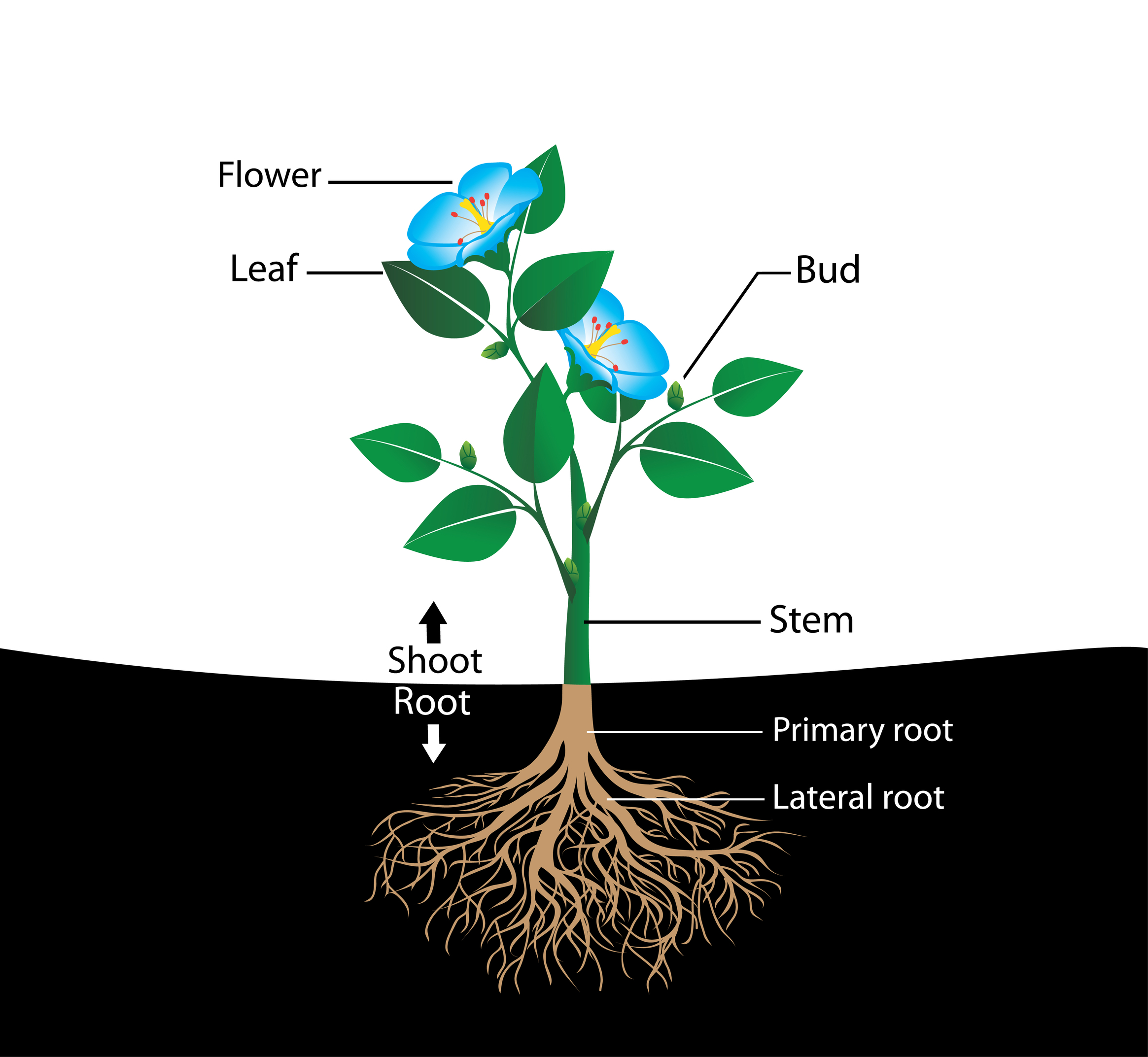
Parts of Flowering Plants
Stem - A plant's stems help support the weight of the plant and all its leaves. Water and minerals are brought up from the roots. Nutrients made by photosynthesis in the leaves are sent down and all around the plant. Roots - A plant's roots anchor it into the ground. They also collect water and minerals from the soil and transport them up.

Structure of a woody stem Learning science, Stem, Math drills
Morphology of the Stem. Stem morphology is simple. Its components are nodes (places where leaves are/were attached) and internodes, long or short (in the last case, plant sometimes appears to be stemless, rosette-like).Stems are different by the type of phyllotaxis.The phyllotaxis refers to the arrangement of leaves. If there is one leaf per node, it is a spiral (alternate) arrangement.

[DIAGRAM] Prayer Plant Stem Diagram
The stem of plants is an organ that helps support other plant parts, transport nutrients, store food, and sometimes even reproduce! Content verified by subject matter experts Free Vaia App with over 20 million students Explore our app and discover over 50 million learning materials for free. Sign-up for free! Biology Plant Biology Plant Stem

The Plant Body Structure at Swampscott High School StudyBlue
The stem is the portion of the plant located above ground that helps to provide support to the flowers, leaves, and buds. Stems also help to transport nutrients and water throughout the.

Growth in Stems Plant Form and Physiology
A plant stem is one of the two main structural axes of a vascular plant. It is the part of the plant that lies above the ground. Few stems are also found underground and are considered to be stem modifications. Functions of Stem It supports and holds leaves, flowers, and fruits.

Plant_Bodies_stems
The function of the stem is to support the plant and transport nutrients to the leaves and flowers. Of course, flowers and plants have many other parts, each with its own specific function. In this guide to the parts of flower and plant, you will learn what makes them so amazing.
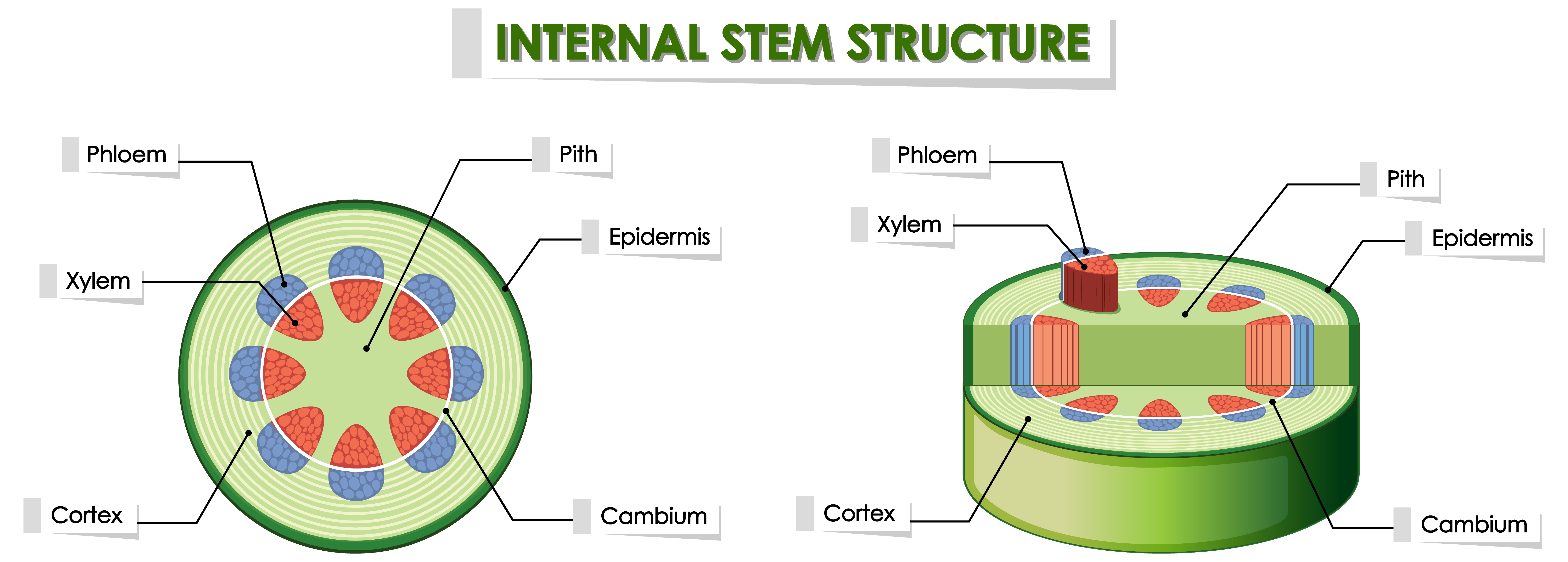
Diagram showing internal plant stem structure 1154883 Vector Art at Vecteezy
Quiz Course 75K views The Function of a Stem in Plant Plant stems are essential to the survival of plants. The three main functions of plants include: Support for the plant Points of.

Root, Stem and Leaf Class 6, Getting to know Plants, Science
Stems. Organization of Tissues into Tissue Systems. The tissues of the stem, as with the other organs, are organized into three tissue systems: dermal, vascular, and ground tissue systems.Below you can see how the tissue systems are arranged in the stem. Diagram of a young plant, Illustrating the cross section of the stem. Primary Growth in Stems.

Plant_Bodies_stems
A look at monocot and dicot stems. 1. The stem supports the plant, facilitates water and nutrient transport between the different parts of the plant, and contains tissues that help the plant grow. The stem supports the plant, holding up the plant's leaves, flowers, and fruits. Within the stem, bundles of vascular tissue, consisting of xylem.
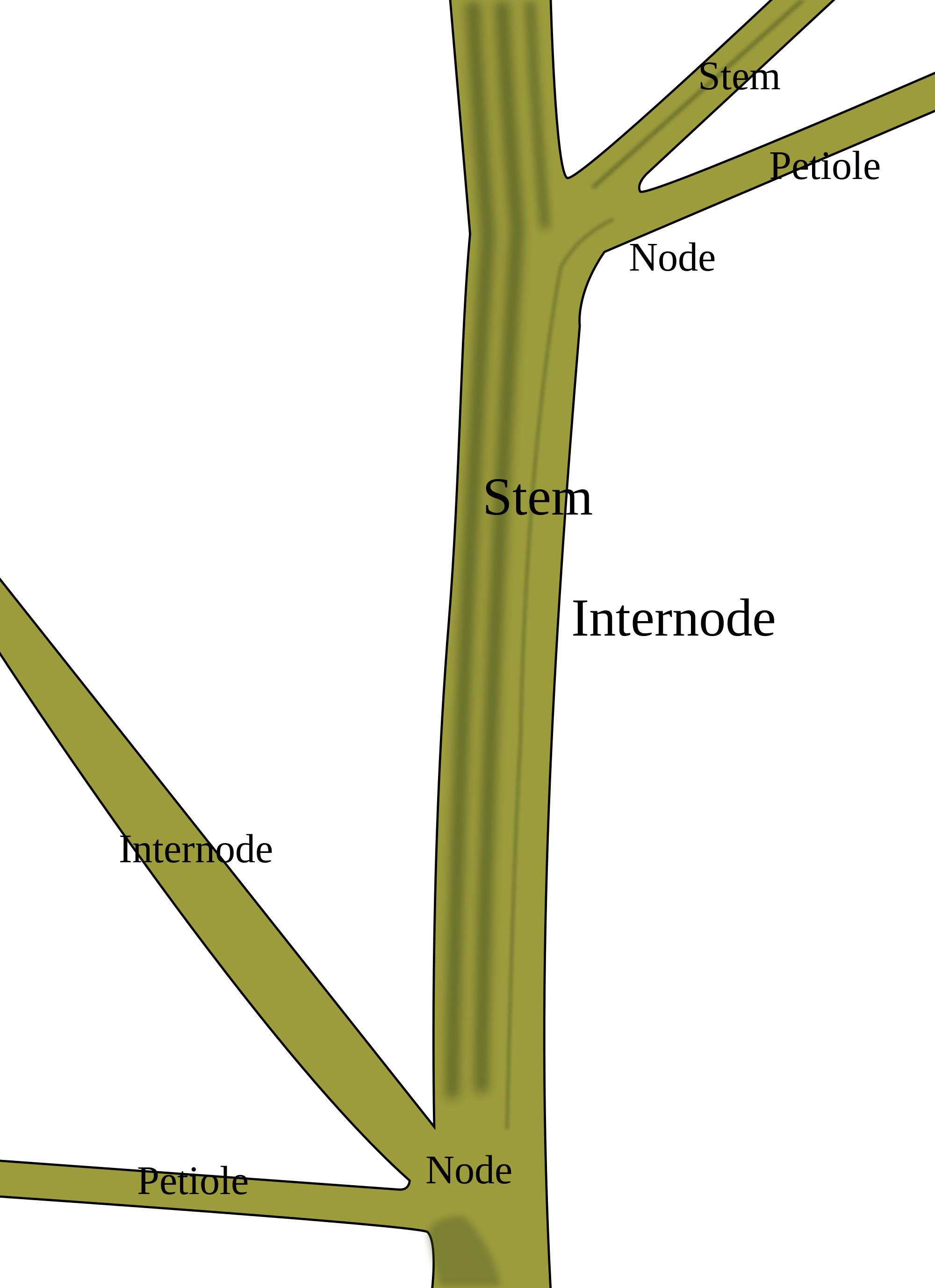
Collection of Stem Of A Plant PNG. PlusPNG
Image by RolfDieterMueller ( CC-BY) Figure 3.3.2.3 3.3.2. 3: In eusteles (left), vascular bundles are arranged around the periphery of the ground tissue. The xylem tissue is located toward the interior of the vascular bundle, and phloem is located toward the exterior. Primary phloem fibers cap the vascular bundles.